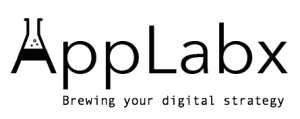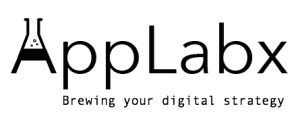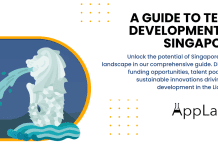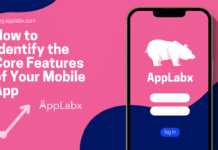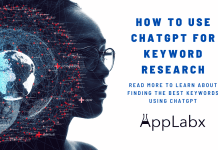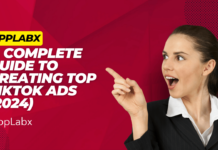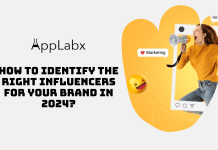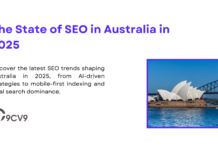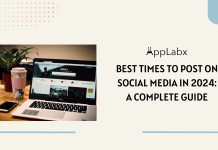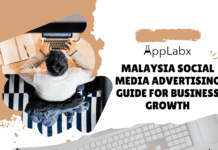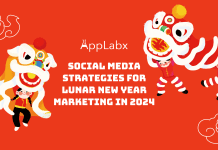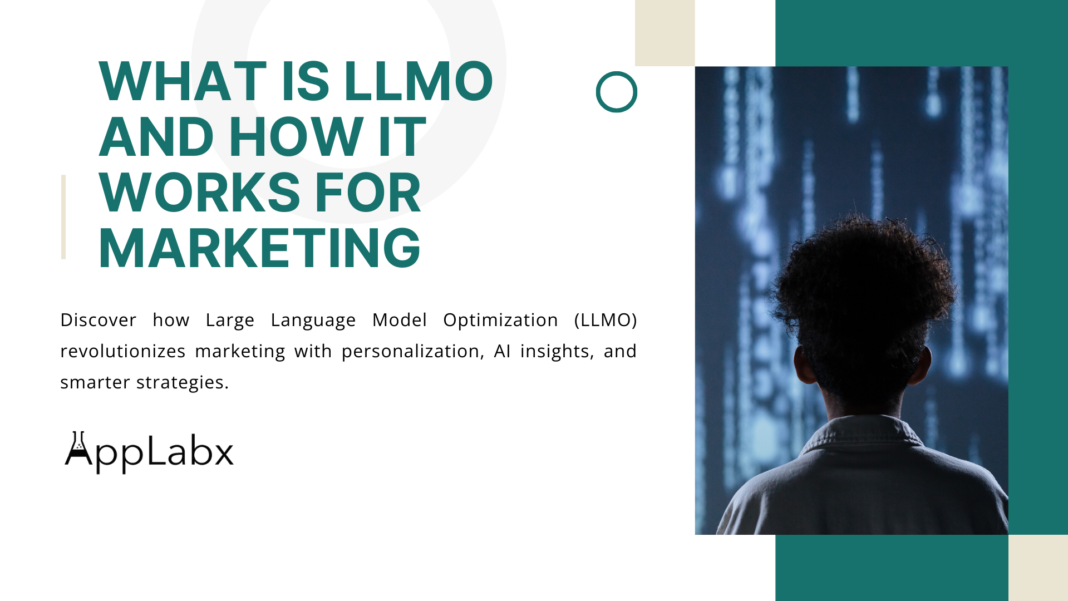Key Takeaways
- LLMO enables personalized marketing by leveraging AI to deliver tailored content and recommendations in real-time.
- Predictive analytics powered by LLMO helps businesses forecast trends and optimize decision-making for greater ROI.
- Automating repetitive tasks with LLMO improves efficiency, allowing marketing teams to focus on strategy and creativity.
In the rapidly evolving landscape of digital marketing, staying ahead of the curve often means embracing cutting-edge technologies.
Among the latest advancements poised to revolutionize how marketers engage with audiences is LLMO, or Large Language Model Optimization.
While artificial intelligence (AI) has been a buzzword for years, LLMO represents a transformative leap that combines the power of AI with marketing precision.
But what exactly is LLMO, and why is it becoming an essential tool for businesses aiming to thrive in the competitive digital space?
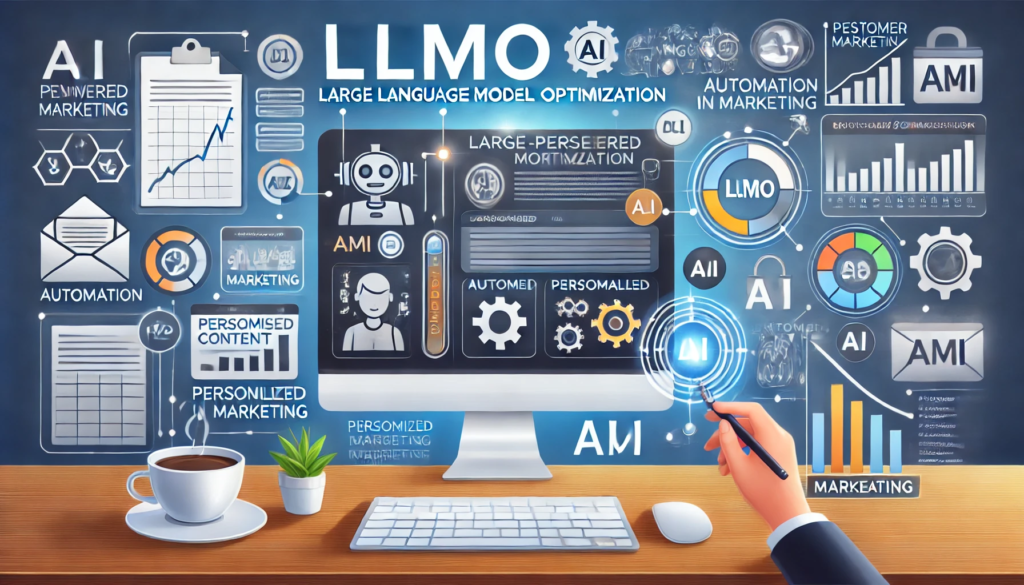
At its core, LLMO revolves around the use of large language models (LLMs)—sophisticated AI systems like GPT-4 or similar tools—that can understand, process, and generate human-like text.
These models are trained on massive datasets, enabling them to produce content, analyze language patterns, and even engage in conversations that feel remarkably natural.
However, LLMO goes beyond the foundational capabilities of these models. It focuses on optimizing their potential for specific tasks, such as creating high-quality marketing content, delivering personalized customer experiences, and driving data-driven strategies.
The Growing Importance of LLMO in Marketing
In today’s fast-paced digital ecosystem, consumers demand personalized and relevant interactions with brands. Generic marketing approaches no longer suffice; instead, businesses must tailor their messaging to meet individual preferences and needs.
This is where LLMO steps in. By leveraging AI-driven tools optimized for marketing purposes, businesses can achieve a level of personalization and efficiency that was once unimaginable.
From automating the creation of SEO-friendly blog posts to analyzing customer data for predictive insights, LLMO empowers marketers to connect with their audiences in more meaningful and impactful ways.
Moreover, the integration of LLMO into marketing workflows aligns perfectly with current trends, such as the rise of conversational AI, voice search optimization, and content automation.
These trends highlight a shift toward user-centric approaches that prioritize engagement and convenience. For instance, voice assistants like Siri and Alexa are powered by language models, and optimizing content for these platforms can significantly enhance a brand’s visibility.
Why Should Marketers Embrace LLMO?
The benefits of LLMO are far-reaching, making it a game-changer for businesses of all sizes. Here are some key reasons why marketers should prioritize LLMO:
- Time Efficiency: Traditional content creation and customer interaction methods can be time-consuming. LLMO automates these processes, allowing marketers to focus on strategy and innovation.
- Cost Savings: By reducing the need for extensive human resources for repetitive tasks, LLMO helps businesses allocate their budgets more effectively.
- Improved Personalization: Advanced language models can analyze customer behavior and preferences, enabling hyper-personalized campaigns that drive higher engagement.
- Enhanced SEO Performance: From crafting keyword-rich blog posts to generating meta descriptions, LLMO can optimize content to rank higher in search engine results.
- Scalability: Whether a brand operates locally or globally, LLMO enables seamless adaptation to different markets and audiences.
How LLMO is Reshaping the Marketing Landscape
The application of LLMO extends across various marketing domains, including content marketing, social media, email campaigns, and customer support. For instance:
- Content Marketing: LLMO-powered tools can generate high-quality articles, product descriptions, and ad copy at scale, saving time and ensuring consistency.
- Social Media: With the ability to craft engaging posts tailored to audience preferences, LLMO enhances social media presence and boosts follower engagement.
- Customer Support: AI chatbots, driven by optimized language models, provide instant, accurate responses to customer queries, improving satisfaction rates.
- Email Campaigns: Personalized email content based on user behavior and preferences becomes easier to achieve with LLMO integration.
Setting the Stage for the Future
As AI continues to advance, the role of LLMO in marketing is expected to grow exponentially. Businesses that adopt this technology early are likely to gain a competitive edge, leveraging its potential to create innovative campaigns and build stronger connections with their customers. However, as with any technology, success with LLMO requires understanding its capabilities, limitations, and ethical considerations.
In this blog, we’ll dive deeper into the world of LLMO, exploring how it works, its applications in marketing, and the challenges marketers need to navigate. By the end, you’ll have a comprehensive understanding of why LLMO is not just a buzzword but a cornerstone of modern marketing strategies.
What is LLMO and How It Works for Marketing
- Introduction to LLMO
- The Core Concepts Behind LLMO
- How LLMO Transforms Marketing Strategies
- Benefits of Using LLMO in Marketing
- Challenges and Ethical Considerations
- How to Get Started with LLMO in Marketing
- Future of LLMO in Marketing
1. Introduction to LLMO
Large Language Model Optimization (LLMO) represents a groundbreaking development in artificial intelligence and its application in modern marketing. This innovative technology combines the capabilities of large language models (LLMs) like OpenAI’s GPT, to revolutionize how businesses connect with audiences, deliver personalized experiences, and optimize marketing strategies.
Understanding Large Language Models (LLMs)
- What Are Large Language Models?
- LLMs are advanced AI systems designed to understand and generate human-like text.
- They are trained on massive datasets containing books, articles, and online content, enabling them to comprehend language patterns and context.
- Examples include GPT-3, GPT-4, and Google’s LaMDA.
- Key Features of LLMs
- Ability to generate coherent and contextually relevant text.
- Support for multilingual communication, making them ideal for global markets.
- Integration with various tools for tasks like summarization, translation, and sentiment analysis.
- Why LLMs Are Important in Marketing
- They enable brands to create personalized, engaging, and scalable content.
- They enhance customer experiences by analyzing data to deliver relevant insights.
What Is LLMO?
- Definition of LLMO
- LLMO, or Large Language Model Optimization, refers to the process of refining and adapting LLMs to meet specific marketing goals and challenges.
- It ensures that the AI tools align with a business’s needs, whether for personalized customer interactions, predictive analytics, or content creation.
- How LLMO Differs from Traditional AI Models
- LLMO focuses on adapting models to optimize for specific use cases, such as marketing campaigns or customer service.
- Traditional AI models are often rigid, while LLMO provides dynamic, real-time adaptability.
- Example of LLMO in Action
- A retail business uses LLMO to optimize its chatbot for personalized product recommendations, improving customer satisfaction and increasing sales.
How LLMO Is Transforming Marketing
- Content Personalization
- LLMO allows marketers to create hyper-personalized messages for individual customers based on their preferences, behaviors, and history.
- Example: An e-commerce platform sends tailored product suggestions based on a user’s browsing history and past purchases.
- Enhanced Customer Engagement
- By analyzing customer data, LLMO can predict the best times to engage with users, leading to higher open rates and conversions.
- Example: A travel agency uses LLMO to send personalized vacation offers at the times users are most likely to book.
- Automated Marketing Tasks
- LLMO automates repetitive tasks such as email generation, social media posts, and customer follow-ups.
- Example: A SaaS company uses LLMO to craft unique email campaigns for thousands of leads with minimal manual input.
Core Capabilities of LLMO in Marketing
- Predictive Analytics
- LLMO identifies patterns in customer behavior, enabling marketers to forecast trends and make proactive decisions.
- Example: A subscription-based business predicts churn rates and implements retention strategies using LLMO.
- Conversational AI
- LLMO powers chatbots and virtual assistants that offer human-like interactions, enhancing customer support and engagement.
- Example: A telecom company uses an LLMO-powered chatbot to resolve customer issues instantly.
- SEO Optimization
- LLMO can analyze keyword trends, suggest optimized content topics, and generate SEO-friendly material.
- Example: A digital marketing agency uses LLMO to identify high-ranking keywords and produce articles that improve search visibility.
Challenges in Implementing LLMO
- Data Privacy Concerns
- Overcoming Bias in AI
- LLMO models can inherit biases from training datasets, requiring businesses to actively identify and mitigate them.
- Example: A financial institution ensures fairness in AI-generated loan recommendations by regularly auditing its LLMO outputs.
Why Marketers Should Embrace LLMO
- Scalability and Efficiency
- LLMO allows businesses to manage large-scale marketing operations with minimal resources.
- Example: A global fashion brand deploys LLMO to translate its campaigns into multiple languages, maintaining brand consistency across regions.
- Improved ROI
- By optimizing customer targeting and engagement, LLMO helps businesses achieve better returns on their marketing investments.
- Example: A fitness app sees a 40% increase in subscriptions after implementing LLMO-driven personalized outreach.
Conclusion
LLMO is not just a trend but a transformative tool for the future of marketing. By harnessing the power of large language models and optimizing them for specific goals, businesses can elevate their marketing strategies, engage customers more effectively, and stay ahead in an increasingly competitive landscape. Adopting LLMO is no longer optional—it’s a necessary step toward achieving sustainable growth in the digital age.
2. The Core Concepts Behind LLMO
To truly grasp the potential of Large Language Model Optimization (LLMO) in marketing, it’s essential to understand the foundational concepts that make it such a transformative tool. At its heart, LLMO is about enhancing the functionality of large language models (LLMs) for specific use cases, such as crafting engaging content, analyzing consumer behavior, and automating marketing tasks. This section breaks down the key concepts behind LLMO, supported by relevant examples for practical understanding.
What Are Large Language Models (LLMs)?
LLMs are advanced AI systems designed to understand and generate human-like text. They form the foundation of LLMO and are key to its functionality.
- Definition and Overview
- Trained on massive datasets (e.g., books, articles, and web content).
- Capable of understanding context, syntax, semantics, and nuances in language.
- Examples: GPT-4, Google’s PaLM, OpenAI’s Codex.
- How LLMs Work
- Use machine learning techniques, particularly neural networks, to predict the next word or phrase in a sequence.
- Analyze patterns in data to produce coherent and contextually relevant responses.
- Examples in Action
- ChatGPT generating personalized email content for a retail brand.
- Codex assisting developers by auto-completing code or generating programming instructions.
Optimization in the Context of LLMs
LLMO focuses on tailoring LLMs to achieve specific marketing goals, improving their efficiency and effectiveness for targeted applications.
- Fine-Tuning for Specific Tasks
- Customizing models with domain-specific data (e.g., e-commerce, healthcare, or travel).
- Example: A fitness app fine-tunes an LLM to generate content related to workout plans and diet tips.
- Task-Specific Adaptations
- Optimizing LLMs to perform specific functions such as:
- Writing SEO-friendly blog posts.
- Generating engaging social media captions.
- Creating personalized email subject lines to boost open rates.
- Example: A travel company trains an LLM to write detailed travel guides optimized for search engines.
- Optimizing LLMs to perform specific functions such as:
- Data-Driven Optimization
- Leveraging user data to improve the relevance of generated content.
- Example: An LLM analyzes customer preferences to create product descriptions tailored to individual tastes.
Key Features That Power LLMs
LLMs are built on several critical features that make them versatile and powerful.
- Natural Language Understanding (NLU)
- Enables LLMs to comprehend the context and intent behind queries.
- Example: A customer typing “best laptops under $1,000” receives recommendations tailored to their budget.
- Text Generation
- Produces human-like text for diverse applications.
- Example: Automatically generating long-form blog content based on a few input keywords.
- Contextual Awareness
- Recognizes context to maintain coherence over extended interactions.
- Example: AI chatbots offering consistent support during multi-turn conversations.
- Multi-Language Support
- Can process and generate content in multiple languages, broadening global marketing reach.
- Example: An e-commerce brand using LLMO to create localized ads for different regions.
The Importance of Data in LLMO
Data is the backbone of LLMO, enabling the models to learn and adapt effectively.
- Training Data
- Massive datasets, such as text from websites, books, and articles, form the training base.
- Example: Training an LLM on fashion-related content to optimize it for a clothing brand.
- Real-Time Feedback
- Continuous learning from user interactions to improve accuracy.
- Example: Chatbots becoming more precise by analyzing frequently asked customer questions.
- Ethical Data Use
- Ensuring data privacy and compliance with regulations like GDPR or CCPA.
- Example: Implementing anonymized datasets for training to safeguard user information.
The Role of AI Algorithms in LLMO
Advanced algorithms enable LLMs to perform tasks with precision and efficiency.
- Transformer Architecture
- Forms the basis of most LLMs, including GPT models.
- Uses attention mechanisms to focus on relevant parts of the input data.
- Example: An LLM prioritizing keywords in a product query to generate an accurate response.
- Pre-Training and Fine-Tuning
- Pre-training involves learning general language patterns.
- Fine-tuning tailors the model to specific applications or industries.
- Example: An LLM pre-trained on global news is fine-tuned for financial analysis.
- Reinforcement Learning with Human Feedback (RLHF)
- Enhances model behavior based on human-guided feedback loops.
- Example: AI chatbots improved through user satisfaction ratings.
Challenges and Limitations of LLMs
While LLMs are powerful, they also come with inherent challenges that LLMO addresses.
- Bias in Language Models
- LLMs may inherit biases present in training data.
- Example: Gendered language in job descriptions being flagged and corrected through optimization.
- Scalability Issues
- Running large models requires significant computational resources.
- Solution: LLMO optimizes processes to improve efficiency.
- Understanding Nuances
- Struggles with sarcasm, humor, or highly contextual references.
- Example: Training a customer service chatbot to recognize regional idioms for better responses.
Conclusion
The core concepts behind LLMO—understanding LLMs, optimizing them for tasks, and leveraging their key features—form the foundation for its transformative impact on marketing. By combining advanced algorithms, vast datasets, and task-specific training, LLMO empowers marketers to streamline workflows, personalize interactions, and drive measurable results. As the technology evolves, understanding these principles will be crucial for businesses looking to remain competitive in the digital age.
3. How LLMO Transforms Marketing Strategies
The advent of Large Language Model Optimization (LLMO) is revolutionizing how businesses approach marketing. By leveraging AI-powered tools optimized for specific marketing tasks, brands can streamline operations, improve engagement, and achieve better results. In this section, we’ll explore the various ways LLMO transforms marketing strategies, complete with practical examples to illustrate its immense potential.
1. Enhanced Content Creation
Content is the cornerstone of modern marketing, and LLMO significantly enhances the efficiency and quality of content creation.
- Automated Blog Writing
- Generates high-quality, SEO-optimized blog posts on demand.
- Example: An online fitness brand uses LLMO to produce detailed articles on workout routines and healthy diets, complete with targeted keywords.
- Dynamic Social Media Posts
- Creates engaging captions, hashtags, and post copy tailored to platform-specific audiences.
- Example: A fashion retailer leverages LLMO to craft compelling Instagram captions that align with trending topics.
- Product Descriptions at Scale
- Produces unique, SEO-friendly descriptions for extensive product catalogs.
- Example: An e-commerce site selling electronics uses LLMO to write concise, keyword-rich descriptions for hundreds of products.
- Personalized Email Content
- Designs email campaigns with tailored subject lines, body text, and CTAs.
- Example: A travel agency creates personalized trip suggestions for its subscribers based on their browsing history and preferences.
2. Improved Customer Interaction
LLMO-powered tools help businesses elevate customer engagement through more meaningful and responsive communication.
- AI-Driven Chatbots
- Provides instant, context-aware responses to customer queries.
- Example: An online retailer uses an LLMO-enhanced chatbot to assist with product recommendations and track order statuses.
- 24/7 Customer Support
- Ensures round-the-clock support without compromising quality.
- Example: A SaaS company implements an LLMO-optimized virtual assistant to handle technical support inquiries outside business hours.
- Conversational Marketing
- Facilitates real-time conversations to nurture leads and improve conversions.
- Example: A financial services firm deploys an AI assistant to guide potential clients through loan application processes.
3. Personalized Marketing Campaigns
LLMO enables hyper-personalized marketing that resonates with individual customer preferences and behaviors.
- Behavioral Targeting
- Analyzes customer data to create campaigns tailored to browsing and purchasing habits.
- Example: A streaming platform sends personalized recommendations for shows and movies based on a user’s watch history.
- Dynamic Ad Copy
- Produces customized ad variations to match different audience segments.
- Example: A cosmetics brand creates localized ads for diverse demographics using LLMO-powered tools.
- Customized Offers and Discounts
- Designs promotional campaigns based on individual customer preferences.
- Example: An online bookstore offers genre-specific discounts to customers who frequently purchase mystery novels.
4. Data-Driven Insights
LLMO assists marketers in uncovering actionable insights from vast amounts of data.
- Predictive Analytics
- Identifies trends and forecasts future customer behavior.
- Example: A subscription service predicts customer churn and creates targeted retention campaigns.
- Customer Sentiment Analysis
- Analyzes reviews, feedback, and social media mentions to gauge brand perception.
- Example: A hospitality chain uses LLMO to extract insights from online reviews and improve guest experiences.
- Campaign Performance Tracking
- Automates the analysis of marketing campaign success metrics.
- Example: A digital agency leverages LLMO to generate real-time reports on ad performance across multiple platforms.
5. Streamlined Search Engine Optimization (SEO)
LLMO is a powerful ally in optimizing content for search engines, improving organic reach and visibility.
- Keyword Research and Implementation
- Identifies high-performing keywords and integrates them naturally into content.
- Example: A tech blog uses LLMO to discover long-tail keywords for emerging trends in AI.
- Voice Search Optimization
- Adapts content for conversational queries popular with voice assistants.
- Example: A local bakery optimizes its FAQ page for voice search queries like “best cupcakes near me.”
- Content Gap Analysis
- Identifies opportunities to create content that fills gaps in existing online resources.
- Example: A travel blog uses LLMO to uncover underserved topics, such as eco-friendly tourism destinations.
6. Social Media Engagement
Social media platforms thrive on creativity and relevance, both of which LLMO enhances.
- Trend Analysis
- Tracks trending hashtags, topics, and formats to keep campaigns relevant.
- Example: A gaming company uses LLMO to identify popular memes and incorporate them into its marketing.
- Community Management
- Automates responses to frequently asked questions and comments.
- Example: A skincare brand deploys an AI assistant to handle DMs and provide product recommendations.
- Interactive Content Generation
- Creates quizzes, polls, and other interactive formats to boost engagement.
- Example: A fitness app uses LLMO to design fun workout quizzes for its Instagram followers.
7. Scalability of Marketing Efforts
LLMO enables businesses to scale their marketing strategies efficiently, ensuring consistent quality and reach.
- Multilingual Content Creation
- Generates content in multiple languages to expand global reach.
- Example: A travel agency uses LLMO to translate its promotional materials into Spanish, French, and Mandarin.
- Cross-Channel Consistency
- Maintains uniform messaging across websites, emails, social media, and ads.
- Example: A luxury brand ensures its branding is consistent across international campaigns.
- Rapid Campaign Deployment
- Speeds up the creation and execution of marketing campaigns.
- Example: A startup launches a product within weeks by automating content creation and outreach with LLMO.
8. Examples of Real-World Applications
LLMO has already proven its worth across industries, transforming marketing strategies for companies large and small.
- E-commerce: Amazon uses AI-powered personalization to recommend products and optimize ad copy.
- Hospitality: Marriott employs LLMO to enhance customer service via virtual assistants and personalized booking suggestions.
- Education: Online learning platforms like Coursera use LLMO to create detailed course descriptions and FAQs.
- Healthcare: Telemedicine providers optimize content for patient education using AI-driven tools.
Conclusion
LLMO is reshaping the marketing landscape by enabling businesses to work smarter, faster, and more creatively. From personalized campaigns to SEO enhancements, LLMO provides tools to improve every aspect of marketing strategy. By adopting these AI-driven techniques, brands can stay ahead of the curve, foster stronger connections with their audience, and achieve sustainable growth in an increasingly competitive market.
4. Benefits of Using LLMO in Marketing
Large Language Model Optimization (LLMO) has emerged as a game-changing technology for modern marketers. By optimizing the capabilities of AI-powered language models, businesses can enhance their marketing efforts, drive better results, and create exceptional customer experiences. In this section, we’ll delve into the benefits of using LLMO in marketing, supported by real-world examples and actionable insights.
1. Improved Efficiency and Productivity
LLMO automates labor-intensive tasks, freeing up time and resources for strategic initiatives.
- Faster Content Creation
- Automates the generation of blog posts, product descriptions, and social media copy.
- Example: A fashion brand uses LLMO to produce hundreds of product descriptions within hours instead of days.
- Streamlined Workflow Management
- Reduces the time spent on repetitive tasks like keyword research and data analysis.
- Example: A marketing agency employs LLMO tools to automatically draft initial campaign ideas, saving hours in brainstorming sessions.
- Automation of Routine Customer Interactions
- Handles FAQs, email responses, and live chat queries with precision.
- Example: An e-commerce platform integrates an AI-powered chatbot to provide instant order updates.
2. Cost-Effective Marketing Solutions
By automating tasks and reducing reliance on human labor, LLMO significantly lowers operational costs.
- Reduced Content Creation Costs
- Eliminates the need for extensive content-writing teams.
- Example: A startup uses LLMO to generate SEO-optimized articles, reducing the need for freelance writers.
- Scalability Without Proportional Costs
- Enables businesses to scale their marketing efforts without a linear increase in expenses.
- Example: An online education platform creates localized course descriptions for global markets using LLMO.
- Optimized Ad Spend
- Enhances ad copy effectiveness, increasing return on investment (ROI).
- Example: A digital marketing agency uses LLMO to test multiple ad variations for better conversion rates.
3. Enhanced Personalization
LLMO enables marketers to deliver highly personalized experiences, improving engagement and customer satisfaction.
- Tailored Content Delivery
- Generates unique messages based on user preferences, behaviors, and demographics.
- Example: A streaming service recommends shows to users by analyzing their viewing history using LLMO.
- Dynamic Customer Journeys
- Adapts marketing campaigns in real time to reflect customer interactions.
- Example: A fitness app sends personalized workout reminders based on user activity data.
- Hyper-Targeted Email Campaigns
- Customizes subject lines, content, and offers for specific audience segments.
- Example: An online retailer sends emails with personalized product suggestions based on browsing behavior.
4. Better SEO and Content Optimization
LLMO provides tools to improve search engine visibility, driving more organic traffic to websites.
- Efficient Keyword Research
- Identifies high-performing and long-tail keywords to boost rankings.
- Example: A travel blog uses LLMO to uncover trending keywords like “eco-friendly travel destinations” for blog topics.
- Content Refresh and Optimization
- Updates old content with relevant keywords and modern trends.
- Example: A tech website uses LLMO to rewrite outdated articles about smartphone reviews.
- Enhanced Voice Search Compatibility
- Adapts content for voice-based queries, increasing visibility on voice assistants like Alexa or Siri.
- Example: A local bakery uses LLMO to optimize its website for voice searches like “best cupcakes near me.”
5. Improved Customer Engagement
LLMO-powered tools enable businesses to interact with customers more effectively, fostering deeper connections.
- Conversational AI
- Provides seamless and interactive customer experiences through AI chatbots.
- Example: A telecom company uses LLMO-enhanced chatbots to assist customers with billing inquiries and service upgrades.
- Real-Time Social Media Interaction
- Engages with users by responding quickly to comments, messages, and mentions.
- Example: A fashion brand uses LLMO to automatically reply to Instagram DMs with styling tips.
- Interactive Content Creation
- Develops engaging quizzes, polls, and surveys to keep audiences entertained.
- Example: A food brand launches an LLMO-powered quiz on its website to suggest recipes based on pantry items.
6. Data-Driven Decision Making
LLMO’s ability to process and analyze data allows marketers to make informed decisions that drive better outcomes.
- Customer Insights and Behavioral Analysis
- Gathers and interprets customer data to understand preferences and trends.
- Example: An online retailer analyzes customer purchase history to identify popular product categories.
- Performance Tracking and Reporting
- Automatically generates detailed reports on campaign performance.
- Example: A digital marketing team uses LLMO to create real-time dashboards showing ad click-through rates.
- Predictive Marketing
- Anticipates customer needs and trends to optimize future campaigns.
- Example: A subscription box service predicts which products will have the highest demand during the holiday season.
7. Multilingual and Global Reach
LLMO’s language capabilities enable businesses to expand their audience by producing content in multiple languages.
- Localized Marketing Campaigns
- Creates culturally appropriate and localized content for different regions.
- Example: A travel agency uses LLMO to translate its promotional materials into Spanish, French, and Japanese.
- Cross-Border Customer Support
- Provides multilingual chatbot assistance to global customers.
- Example: An e-commerce platform uses LLMO to respond to customer queries in over 10 languages.
- SEO for International Markets
- Optimizes content for region-specific search engines and keywords.
- Example: A skincare brand adapts its product descriptions for markets in South Korea and Germany.
8. Scalability and Flexibility
LLMO allows businesses to scale their marketing efforts without sacrificing quality or consistency.
- Consistent Branding Across Channels
- Ensures uniformity in messaging across websites, ads, social media, and emails.
- Example: A luxury brand maintains its voice and tone across campaigns targeting high-end customers globally.
- Adaptation to Emerging Trends
- Quickly adjusts strategies to align with new marketing trends and audience behaviors.
- Example: A gaming company uses LLMO to create timely content around the launch of a new console.
- Massive Content Output Without Compromising Quality
- Enables businesses to handle large-scale content needs effortlessly.
- Example: An educational platform publishes thousands of course summaries optimized for search engines using LLMO.
Conclusion
The benefits of using LLMO in marketing are both transformative and far-reaching. From improving efficiency and personalization to enabling multilingual campaigns and data-driven decision-making, LLMO empowers businesses to stay competitive in an ever-evolving digital landscape. Whether a small startup or a global enterprise, integrating LLMO into your marketing strategies ensures a scalable, cost-effective, and impactful approach to engaging with your audience. As technology continues to advance, the adoption of LLMO is no longer optional—it’s a necessity for future-ready marketing.
5. Challenges and Ethical Considerations
While Large Language Model Optimization (LLMO) offers transformative benefits for marketers, its adoption also brings significant challenges and ethical dilemmas. Understanding these concerns is essential to ensure responsible and effective use of this technology. In this section, we explore the challenges and ethical considerations of using LLMO in marketing, supported by examples and actionable insights.
1. Data Privacy and Security Concerns
The reliance on data for LLMO-powered marketing raises serious privacy and security issues.
- Data Collection Risks
- Marketers often collect and analyze large amounts of user data, raising concerns about consent.
- Example: A retail brand using LLMO to personalize offers may inadvertently collect sensitive user data without clear consent.
- Data Breaches
- Storing customer data poses a risk of breaches, potentially harming brand reputation.
- Example: An e-commerce platform experiences a data leak, exposing purchase histories and personal details.
- Compliance with Regulations
- Businesses must adhere to privacy laws like GDPR, CCPA, and others.
- Example: A global company using LLMO for email campaigns must ensure it complies with data privacy laws in each region.
2. Ethical Use of AI-Generated Content
Marketers must ensure that AI-generated content aligns with ethical standards.
- Transparency in AI-Generated Content
- Audiences should be informed when content is generated by AI.
- Example: A news outlet using LLMO for article generation may mislead readers if the AI’s involvement isn’t disclosed.
- Plagiarism and Intellectual Property Concerns
- LLMO may inadvertently replicate existing content, violating copyright laws.
- Example: A fashion blog using AI for article creation faces backlash after publishing a post similar to a competitor’s work.
- Authenticity and Human Touch
- Over-reliance on LLMO can lead to generic content lacking authenticity.
- Example: A travel agency’s AI-generated destination reviews feel impersonal, reducing audience trust.
3. Bias in AI Models
LLMOs are only as unbiased as the data they’re trained on, and biases can unintentionally influence marketing campaigns.
- Cultural Bias
- AI may reinforce stereotypes or fail to understand cultural nuances.
- Example: An AI-powered ad campaign for a global fashion brand uses language and imagery that unintentionally offends certain communities.
- Gender and Racial Bias
- LLMO may perpetuate gender or racial biases present in training data.
- Example: A recruitment firm’s AI-generated job descriptions consistently use male-centric pronouns.
- Mitigation Strategies
- Employ diverse datasets and conduct regular bias audits.
- Example: A multinational brand trains its LLMO on multilingual and inclusive datasets to reduce bias.
4. Over-Automation Risks
Excessive reliance on LLMO can dilute brand identity and alienate audiences.
- Loss of Human Creativity
- Replacing creative teams with LLMO tools can lead to generic and uninspired campaigns.
- Example: A beverage company’s AI-generated ad copy lacks the emotional resonance of human-created campaigns.
- Dehumanized Customer Interactions
- Customers may prefer human interaction over AI-driven communication.
- Example: A luxury hotel receives complaints about its chatbot-based customer support, as guests expect personalized attention.
- Balancing Automation and Human Input
- Retain human oversight to ensure campaigns remain creative and empathetic.
- Example: A nonprofit combines LLMO-generated content with human storytelling to preserve emotional appeal.
5. Environmental Impact of LLMO
Training and using LLMOs require significant computational resources, contributing to environmental concerns.
- High Energy Consumption
- AI training and processing are energy-intensive, with large carbon footprints.
- Example: A tech company faces scrutiny for its LLMO-powered marketing campaigns consuming excessive electricity.
- Sustainable Practices
- Opt for energy-efficient models and cloud providers using renewable energy.
- Example: A SaaS company chooses a green AI service provider to minimize its carbon impact.
6. Misuse and Ethical Manipulation
LLMO can be misused for manipulative marketing practices, leading to ethical dilemmas.
- Clickbait and Deceptive Content
- AI may generate misleading or overly sensationalized headlines.
- Example: A media outlet uses AI to create clickbait headlines that misrepresent the article’s content.
- Exploitation of Consumer Behavior
- Personalized marketing can cross ethical boundaries by exploiting vulnerabilities.
- Example: A financial institution uses AI to upsell high-interest loans to users identified as financially insecure.
- Combatting Misuse
- Establish clear ethical guidelines for AI-generated marketing content.
- Example: A healthcare brand adopts a strict policy against fear-based marketing in its AI-driven campaigns.
7. Challenges in Global Adaptation
Using LLMO for global marketing campaigns can lead to issues in localization and adaptation.
- Language and Cultural Barriers
- AI-generated translations may lack cultural sensitivity.
- Example: A food delivery app’s campaign slogan translates poorly into another language, causing confusion.
- Regulatory Differences
- Varying regional laws complicate the implementation of LLMO-based strategies.
- Example: A software company must adapt its data collection practices to comply with stricter European regulations.
- Localized Model Training
- Train LLMO on region-specific data to improve cultural relevance.
- Example: A global clothing retailer trains its AI to include local fashion trends in different countries.
8. Accountability and Governance
Marketers must establish accountability frameworks for LLMO use.
- Lack of Clear Ownership
- Determining responsibility for AI-generated content can be challenging.
- Example: A travel agency faces legal issues over an AI-written article that plagiarized another website.
- Ethical AI Governance
- Create policies to oversee LLMO usage and ensure accountability.
- Example: A corporate board forms an AI ethics committee to evaluate the use of LLMO in marketing strategies.
- Regular Audits and Reviews
- Conduct periodic assessments of LLMO-generated campaigns.
- Example: A marketing team uses audit tools to ensure AI-generated ad copy aligns with brand values.
Conclusion
While LLMO holds immense potential to transform marketing, its adoption comes with challenges and ethical considerations that businesses must address. From ensuring data privacy to mitigating bias and environmental impact, marketers must implement robust strategies for responsible LLMO use. Balancing automation with human creativity, adhering to ethical standards, and fostering transparency can help brands leverage LLMO’s power while maintaining trust and integrity. As the technology evolves, so too must the frameworks guiding its responsible application in marketing.
6. How to Get Started with LLMO in Marketing
Getting started with Large Language Model Optimization (LLMO) in marketing can seem overwhelming, but with a structured approach, you can integrate this transformative technology effectively. This section outlines a step-by-step guide to leveraging LLMO for your marketing efforts. From understanding your needs to implementing advanced tools, we’ll cover everything you need to know, supported by examples and actionable insights.
1. Understand Your Marketing Goals
Before adopting LLMO, identify the specific goals you want to achieve.
- Define Objectives
- Determine how LLMO can help you reach your marketing goals, such as increasing conversions, enhancing personalization, or reducing costs.
- Example: An e-commerce business aims to use LLMO to improve product recommendations and drive sales.
- Prioritize Use Cases
- Start with one or two specific use cases where LLMO can provide the most value.
- Example: A SaaS company focuses on optimizing its email campaigns with LLMO to improve open rates.
- Set Measurable KPIs
- Identify metrics to evaluate the success of your LLMO initiatives, such as ROI, engagement rates, or customer satisfaction scores.
- Example: A fitness app sets a goal to reduce customer churn by 10% through personalized recommendations powered by LLMO.
2. Assess Your Existing Marketing Infrastructure
Evaluate your current tools, processes, and data readiness to ensure a smooth integration of LLMO.
- Audit Marketing Tools
- Check if your existing platforms, such as CRM or email marketing tools, can integrate with LLMO.
- Example: A retail company assesses whether its email automation tool can support AI-generated subject lines.
- Evaluate Data Availability and Quality
- Ensure you have access to clean, organized, and sufficient data for LLMO to function effectively.
- Example: A travel agency cleans its customer database to ensure accurate personalization for travel package recommendations.
- Identify Gaps
- Highlight areas where new tools or processes might be needed to support LLMO.
- Example: A marketing team invests in an advanced analytics tool to better understand user behavior.
3. Choose the Right LLMO Tools
Selecting the appropriate tools is critical to successful implementation.
- Research Available Tools
- Look for LLMO platforms that align with your specific goals and budget.
- Example: A startup chooses an affordable LLMO solution like OpenAI’s GPT-based API for generating blog content.
- Evaluate Features
- Compare tools based on features such as natural language processing, multilingual support, and integration capabilities.
- Example: A global brand selects an LLMO tool with robust multilingual capabilities for its international campaigns.
- Consider Scalability
- Choose a tool that can scale as your marketing needs grow.
- Example: A small business starts with basic LLMO features but ensures the platform supports advanced analytics for future use.
4. Train Your Team
Equip your marketing team with the skills and knowledge to effectively use LLMO.
- Provide Training on AI Basics
- Help team members understand how LLMO works and its potential applications in marketing.
- Example: A digital agency organizes workshops to train staff on AI-driven content generation tools.
- Develop Technical Expertise
- Train team members to use specific LLMO platforms and interpret the outputs.
- Example: A content team learns how to fine-tune AI-generated blogs to align with brand tone.
- Encourage Cross-Functional Collaboration
- Involve departments like IT and data analytics to support LLMO integration.
- Example: A marketing manager collaborates with the IT team to ensure seamless API integration for LLMO tools.
5. Start with Pilot Projects
Test LLMO on smaller, manageable projects before scaling up.
- Identify Low-Risk Areas
- Choose projects with minimal risk to test LLMO’s effectiveness.
- Example: A fashion brand uses LLMO to automate product descriptions for a single category before expanding.
- Monitor Performance
- Track metrics to assess how well LLMO meets your objectives.
- Example: A travel blog measures engagement rates on AI-generated articles compared to human-written ones.
- Iterate and Improve
- Use feedback from pilot projects to refine your approach before broader implementation.
- Example: A restaurant chain improves its LLMO-powered chatbot responses based on customer feedback.
6. Integrate LLMO into Your Marketing Strategy
Once confident in its capabilities, integrate LLMO into your broader marketing efforts.
- Expand Use Cases
- Implement LLMO across various marketing channels, including social media, email, and SEO.
- Example: A cosmetics brand uses LLMO to create personalized product recommendations on its website and email campaigns.
- Automate Repetitive Tasks
- Leverage LLMO to handle routine tasks, freeing up your team for strategic planning.
- Example: A digital agency automates keyword research for SEO campaigns using LLMO tools.
- Align with Business Goals
- Ensure LLMO efforts are aligned with your overall business and marketing objectives.
- Example: A B2B company integrates LLMO insights into its account-based marketing strategy to target high-value clients.
7. Address Challenges and Ethical Concerns
Proactively address the challenges and ethical considerations of using LLMO.
- Ensure Data Privacy and Compliance
- Follow data protection laws and obtain user consent before collecting data.
- Example: A healthcare company ensures its LLMO-powered campaigns comply with HIPAA regulations.
- Mitigate Bias
- Regularly audit AI outputs to identify and address any potential biases.
- Example: An education platform uses diverse training data to ensure fair and inclusive content recommendations.
- Maintain Transparency
- Clearly disclose when AI is used in marketing campaigns.
- Example: A financial blog labels AI-generated articles to maintain transparency with readers.
8. Continuously Optimize and Scale
Refine your LLMO strategy and scale your efforts based on performance insights.
- Analyze Campaign Performance
- Use analytics tools to measure the effectiveness of LLMO-powered campaigns.
- Example: A retail company tracks conversions from AI-generated product descriptions to identify top-performing content.
- Incorporate User Feedback
- Regularly gather feedback from customers to improve LLMO-driven initiatives.
- Example: A software company uses surveys to understand user satisfaction with its AI-powered customer support.
- Experiment with Advanced Features
- Explore additional capabilities like predictive analytics and voice search optimization.
- Example: A real estate agency uses LLMO to create interactive virtual assistants for property recommendations.
Conclusion
Getting started with LLMO in marketing requires careful planning, the right tools, and a commitment to continuous improvement. By setting clear goals, starting with pilot projects, and addressing challenges proactively, businesses can unlock the full potential of LLMO. As technology evolves, staying agile and informed will be key to maximizing the impact of LLMO on your marketing strategies.
7. Future of LLMO in Marketing
The future of Large Language Model Optimization (LLMO) in marketing is filled with potential, as advancements in AI technology continue to reshape how businesses interact with customers. LLMO’s capabilities are expected to grow more sophisticated, creating opportunities for hyper-personalized experiences, predictive insights, and sustainable practices. This section explores key trends and innovations that will shape the future of LLMO in marketing, along with examples to illustrate these changes.
1. Enhanced Personalization at Scale
LLMO will revolutionize personalization, enabling marketers to deliver content and offers that feel uniquely tailored to each individual.
- Real-Time Personalization
- AI will analyze user behavior in real-time to adapt marketing messages instantly.
- Example: A streaming platform might use LLMO to generate movie recommendations tailored to a user’s current mood based on viewing habits.
- Dynamic Content Creation
- LLMO will generate adaptive content that changes based on user preferences or behavior.
- Example: An e-commerce website could show AI-curated product descriptions that vary depending on a visitor’s search history.
- Hyper-Segmentation
- Future models will allow marketers to create highly specific audience segments for targeted campaigns.
- Example: A fitness app may generate personalized workout plans based on a combination of user demographics, goals, and activity history.
2. Predictive Analytics and Decision-Making
LLMO will become a powerful tool for forecasting trends and enabling data-driven decision-making.
- Customer Behavior Prediction
- AI will predict future customer actions with greater accuracy, helping marketers anticipate needs.
- Example: A retail company might use LLMO to identify customers likely to churn and offer targeted incentives to retain them.
- Market Trend Analysis
- LLMO will analyze industry-wide data to predict upcoming trends, helping brands stay ahead.
- Example: A fashion brand uses AI insights to predict the popularity of specific styles for upcoming seasons.
- Optimized Campaign Timing
- Marketers will rely on AI to determine the best times to launch campaigns for maximum impact.
- Example: A travel agency might use LLMO to identify the optimal time to promote vacation packages based on historical booking trends.
3. Conversational AI and Customer Interaction
The integration of LLMO with conversational AI will redefine customer engagement through more human-like interactions.
- Improved Chatbots
- Chatbots will evolve to provide more nuanced and empathetic responses.
- Example: A banking app could deploy an LLMO-powered chatbot to guide users through complex financial decisions.
- Voice Search and Virtual Assistants
- LLMO will enhance voice search optimization, making it easier for users to interact with brands using smart devices.
- Example: A grocery delivery service might use AI to enable customers to place orders via voice commands.
- Interactive Content Experiences
- AI will facilitate interactive storytelling and immersive brand experiences.
- Example: A cosmetics brand could create a virtual beauty advisor that provides real-time makeup tutorials based on user input.
4. Ethical AI and Responsible Marketing
As LLMO becomes more prevalent, ethical considerations will take center stage.
- Transparency and Trust
- Brands will prioritize transparency in how AI is used to build trust with customers.
- Example: A news outlet might label AI-generated articles to ensure readers understand the source.
- Bias Mitigation
- Efforts will focus on reducing biases in AI models to ensure fair and inclusive marketing.
- Example: A global NGO might train LLMO on diverse datasets to ensure campaigns resonate across different cultures.
- Data Privacy Compliance
- LLMO will incorporate features to ensure compliance with evolving privacy regulations.
- Example: A fitness tracker company could use privacy-first LLMO models that process data locally rather than on cloud servers.
5. Integration with Emerging Technologies
The combination of LLMO with other technologies will unlock innovative possibilities.
- AI and IoT
- Integration with Internet of Things (IoT) devices will enhance personalization in smart environments.
- Example: A smart home assistant might use LLMO to recommend energy-saving tips based on household usage patterns.
- AR and VR Experiences
- LLMO will power content in augmented and virtual reality settings.
- Example: A real estate firm could use AI-generated narratives to create immersive virtual property tours.
- Blockchain and Secure Marketing
- Blockchain technology could combine with LLMO to ensure transparent and secure transactions.
- Example: A luxury brand might use blockchain-backed LLMO to verify the authenticity of AI-generated product certifications.
6. Sustainability and Green AI
The environmental impact of AI will drive innovations in sustainable LLMO practices.
- Energy-Efficient Models
- Advances in AI will reduce the energy consumption required for training and deploying LLMOs.
- Example: A tech startup might use energy-efficient LLMO platforms to power its marketing efforts.
- Eco-Friendly Campaigns
- AI will assist in creating marketing campaigns that promote sustainability.
- Example: A clothing retailer might use AI to highlight eco-friendly product options in personalized recommendations.
- Carbon-Neutral AI
- Companies will adopt AI solutions from providers committed to renewable energy and carbon neutrality.
- Example: A food delivery app chooses a green AI provider to power its personalized offers.
7. Democratization of LLMO Technology
LLMO will become more accessible to businesses of all sizes.
- Cost-Effective Solutions
- Advances in technology will make LLMO tools more affordable for small and medium-sized businesses.
- Example: A local bakery could use an LLMO-powered platform to automate social media posts and email marketing.
- No-Code AI Platforms
- Marketers without technical expertise will leverage no-code platforms to implement LLMO strategies.
- Example: A nonprofit organization uses a drag-and-drop LLMO tool to create personalized donation appeals.
- Wider Adoption Across Industries
- LLMO will be tailored to meet the needs of niche industries.
- Example: An independent filmmaker uses LLMO to script targeted ads for their upcoming release.
Conclusion
The future of LLMO in marketing is poised to be transformative, offering businesses unprecedented opportunities for personalization, efficiency, and innovation. By leveraging advancements in AI and embracing ethical and sustainable practices, marketers can harness the power of LLMO to create impactful campaigns that resonate with audiences. As the technology evolves, staying informed and adaptable will be essential for maximizing its potential and maintaining a competitive edge in the dynamic marketing landscape.
Conclusion
Large Language Model Optimization (LLMO) represents a groundbreaking evolution in the marketing landscape, reshaping how brands connect with audiences, personalize experiences, and drive results. As businesses navigate an increasingly digital and data-driven environment, the integration of LLMO into marketing strategies offers unparalleled opportunities for innovation, efficiency, and growth.
LLMO’s core ability to process vast amounts of data and generate human-like responses equips marketers with tools to automate tasks, craft personalized campaigns, and make data-driven decisions. By diving deep into customer behavior, predicting trends, and delivering real-time insights, LLMO empowers businesses to stay ahead of the curve in a competitive market.
Key Takeaways: How LLMO Revolutionizes Marketing
- Enhanced Personalization
- LLMO enables marketers to create tailored content and campaigns for each customer, improving engagement and driving conversions.
- For example, e-commerce brands can use LLMO to recommend products based on individual shopping patterns, fostering deeper customer loyalty.
- Efficient Content Creation
- Automating content generation for blogs, social media, and ad copy saves time and resources, allowing teams to focus on strategy and innovation.
- Example: AI-powered tools can generate high-quality product descriptions for thousands of SKUs, reducing turnaround time significantly.
- Data-Driven Insights
- With predictive analytics, LLMO can forecast customer behavior, market trends, and campaign performance, helping businesses make smarter decisions.
- Improved Customer Interactions
- LLMO-powered chatbots and virtual assistants enhance customer service by offering instant, accurate, and personalized responses.
Challenges and Ethical Considerations
While LLMO offers immense benefits, adopting it comes with challenges. Ensuring data privacy, reducing AI biases, and maintaining transparency are critical to building trust with customers. Ethical marketing practices and compliance with regulations will play a pivotal role in the sustainable use of LLMO. Businesses must strike a balance between leveraging AI’s capabilities and respecting consumer rights and values.
Why Businesses Should Embrace LLMO Now
The adoption of LLMO is no longer optional; it’s a competitive necessity. Early adopters of this technology have the advantage of staying ahead of trends, improving customer satisfaction, and optimizing marketing ROI. With tools and platforms becoming more accessible, businesses of all sizes can harness the power of LLMO to elevate their marketing efforts.
Preparing for the Future of Marketing
As LLMO evolves, its potential applications in marketing will expand, offering even more opportunities to innovate. From predictive analytics to conversational AI, businesses can expect new tools and features to further enhance their strategies. Marketers who invest in understanding and implementing LLMO today will be better equipped to adapt to future advancements and meet the growing demands of their customers.
Call to Action
Are you ready to transform your marketing strategy with LLMO? Start by identifying your business needs, selecting the right tools, and upskilling your team to make the most of this revolutionary technology. Whether you’re a small business or a global brand, integrating LLMO into your marketing approach will help you stay competitive and achieve long-term success.
The future of marketing is here, and it’s powered by LLMO. Don’t wait—embrace the potential of AI and redefine the way you connect with your audience. With LLMO, the possibilities are endless.
If you are looking for a top-class digital marketer, then book a free consultation slot here.
If you find this article useful, why not share it with your friends and business partners, and also leave a nice comment below?
We, at the AppLabx Research Team, strive to bring the latest and most meaningful data, guides, and statistics to your doorstep.
To get access to top-quality guides, click over to the AppLabx Blog.
People also ask
What is LLMO in marketing?
LLMO (Large Language Model Optimization) in marketing refers to the use of AI-powered language models to automate content generation, personalize customer interactions, and optimize marketing strategies for better performance and ROI.
How does LLMO work for marketing?
LLMO uses machine learning to process vast amounts of data, allowing marketers to generate personalized content, predict customer behavior, automate tasks, and make data-driven decisions in real time.
What are the benefits of using LLMO in marketing?
LLMO offers benefits such as enhanced personalization, time-saving automation, improved targeting, data-driven insights, and the ability to scale marketing efforts with greater efficiency and accuracy.
How can LLMO improve customer engagement?
By creating personalized content and interactions, LLMO can increase customer engagement. It helps businesses deliver relevant messaging based on customer preferences, behaviors, and past interactions.
What industries can benefit from LLMO in marketing?
LLMO can benefit various industries, including e-commerce, retail, healthcare, finance, travel, education, and more, by enhancing personalization, optimizing customer experiences, and driving conversions.
Can LLMO generate content automatically?
Yes, LLMO can automate content generation, such as blog posts, social media updates, product descriptions, and email campaigns, saving time and improving consistency across marketing efforts.
Is LLMO cost-effective for small businesses?
Yes, LLMO can be cost-effective for small businesses, as it automates many tasks that would otherwise require significant human effort, allowing them to focus resources on more strategic activities.
How can LLMO enhance email marketing?
LLMO can optimize email marketing by personalizing subject lines, tailoring content to individual recipients, automating responses, and predicting the best times for sending emails to maximize open rates and conversions.
What is the role of AI in LLMO?
AI plays a central role in LLMO by powering the machine learning models that process customer data, generate insights, and create personalized marketing content based on individual behaviors and preferences.
How does LLMO predict customer behavior?
LLMO analyzes customer data such as browsing habits, purchase history, and interactions to predict future behaviors, such as buying decisions, allowing marketers to take proactive actions to drive conversions.
How can LLMO help with SEO optimization?
LLMO can improve SEO by generating keyword-rich content, optimizing on-page elements, suggesting relevant topics, and automating content updates to align with the latest search trends and algorithms.
What is the difference between LLMO and traditional marketing?
Traditional marketing relies on manual processes and broad targeting, while LLMO uses AI to personalize content, predict customer behavior, automate tasks, and analyze data for more efficient and scalable marketing efforts.
How can LLMO support social media marketing?
LLMO can generate social media posts, suggest optimal times for posting, analyze engagement metrics, and personalize messaging based on audience data to enhance social media campaigns and improve customer interactions.
Can LLMO improve lead generation?
Yes, LLMO can improve lead generation by creating personalized offers, targeting the right audience segments, automating follow-ups, and analyzing lead behavior to optimize conversion rates.
Is LLMO suitable for B2B marketing?
LLMO is ideal for B2B marketing as it helps create personalized outreach, automate communications, and analyze customer data, allowing businesses to tailor their marketing strategies to specific industries and client needs.
What tools are available for LLMO in marketing?
There are several tools available for LLMO, such as OpenAI’s GPT models, Jasper, Copy.ai, and MarketMuse, which help marketers automate content creation, optimize campaigns, and personalize customer interactions.
Can LLMO help with content strategy?
Yes, LLMO can assist in content strategy by identifying trending topics, suggesting relevant keywords, automating content creation, and analyzing the effectiveness of existing content to drive better engagement and results.
What challenges might marketers face with LLMO?
Challenges include data privacy concerns, potential biases in AI algorithms, ensuring accuracy in automated content, and the need for ongoing optimization to maintain relevance and efficiency in marketing efforts.
Is LLMO ethical for marketing use?
LLMO can be ethical if used responsibly. Marketers must ensure data privacy, avoid biases in AI outputs, and remain transparent with customers about AI-generated content to build trust and comply with regulations.
How can LLMO enhance customer service?
LLMO can power chatbots and virtual assistants, providing instant, personalized customer support by responding to inquiries, processing orders, and offering product recommendations based on customer data.
What is the future of LLMO in marketing?
The future of LLMO in marketing includes more advanced personalization, integration with emerging technologies like IoT and AR, improved predictive analytics, and more ethical and responsible AI usage, making marketing even more efficient and data-driven.
How does LLMO handle data privacy?
LLMO platforms must comply with data protection regulations like GDPR and CCPA by anonymizing customer data and ensuring secure handling of personal information to maintain privacy and avoid breaches.
Can LLMO automate ad copy creation?
Yes, LLMO can automate the creation of ad copy by analyzing target audience preferences, generating relevant messages, and optimizing copy for higher click-through and conversion rates.
How does LLMO integrate with CRM systems?
LLMO can integrate with CRM systems by analyzing customer interactions, personalizing messages, and automating communications across channels like email, social media, and SMS for more effective lead nurturing and customer retention.
What are the ethical concerns surrounding LLMO?
Ethical concerns include AI biases, transparency in AI-generated content, data privacy issues, and ensuring the responsible use of AI to avoid manipulation or misleading customers with automated messaging.
Can LLMO improve customer retention?
LLMO improves customer retention by providing personalized content and offers, automating loyalty programs, and delivering timely communications based on customer behavior to encourage repeat business.
What is the impact of LLMO on ROI?
LLMO can significantly increase ROI by automating marketing tasks, improving targeting and personalization, reducing human error, and providing insights that help marketers optimize campaigns for better results.
How does LLMO optimize marketing campaigns?
LLMO optimizes marketing campaigns by analyzing data to determine the best strategies, generating personalized content, automating follow-ups, and providing real-time insights to adjust campaigns for maximum effectiveness.
What is the role of LLMO in customer segmentation?
LLMO helps marketers create highly specific customer segments by analyzing data such as demographics, behaviors, and preferences, enabling targeted campaigns that resonate more effectively with each group.
Can LLMO handle multilingual marketing?
Yes, LLMO can support multilingual marketing by generating content in various languages, ensuring that personalized messaging reaches diverse audiences across different regions and cultures.
Is LLMO scalable for large enterprises?
Yes, LLMO is highly scalable and can handle vast amounts of data, making it ideal for large enterprises with complex marketing needs and the ability to reach diverse global audiences.
How does LLMO enhance influencer marketing?
LLMO can optimize influencer marketing by identifying the best influencers based on audience data, generating content ideas, and automating communication, resulting in more efficient and effective influencer campaigns.
What is the difference between LLMO and traditional AI marketing tools?
LLMO uses large-scale language models to create human-like content, analyze behavior, and generate insights, offering a more dynamic and adaptive approach compared to traditional AI marketing tools that often rely on rigid rules and limited automation.
